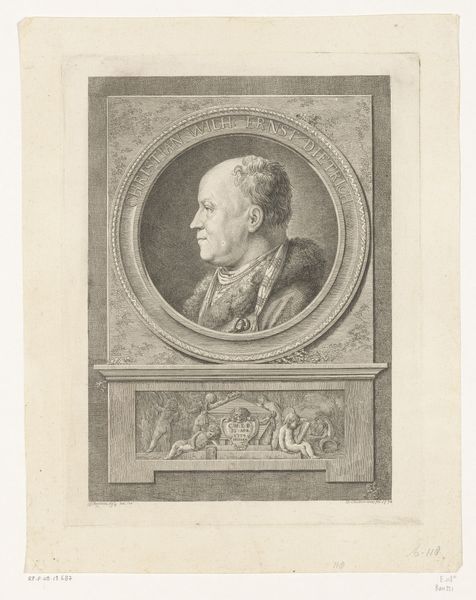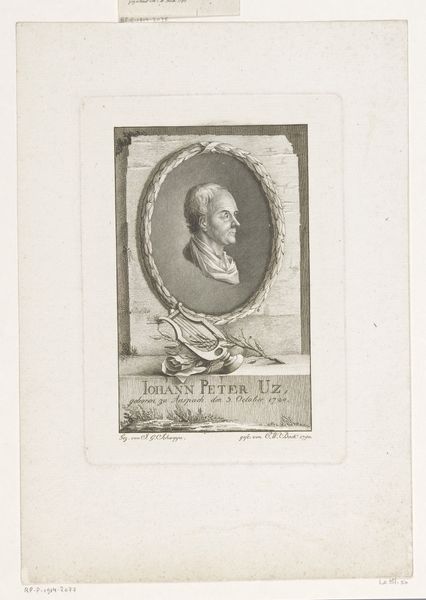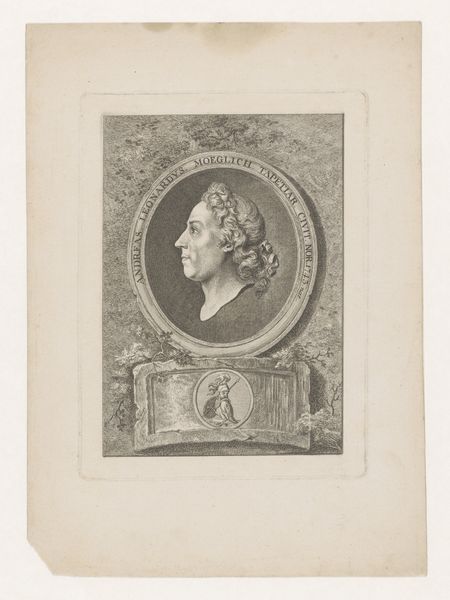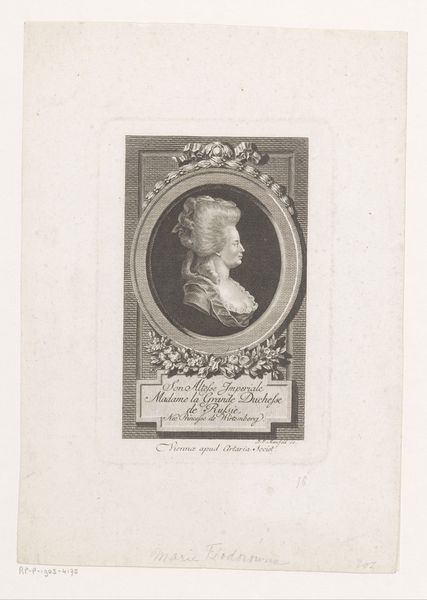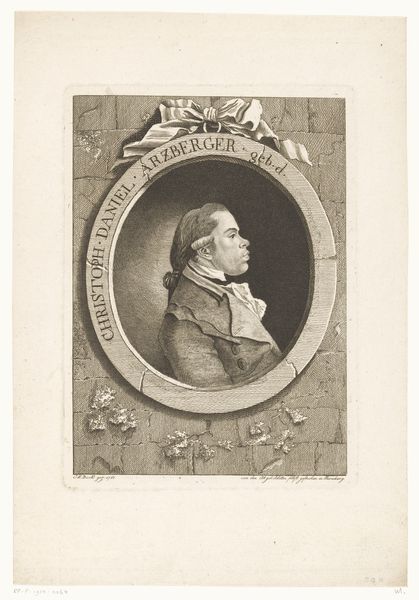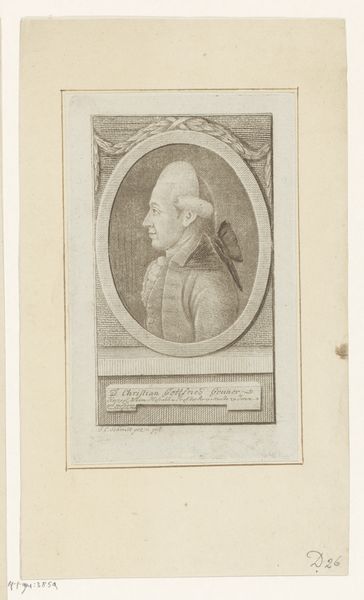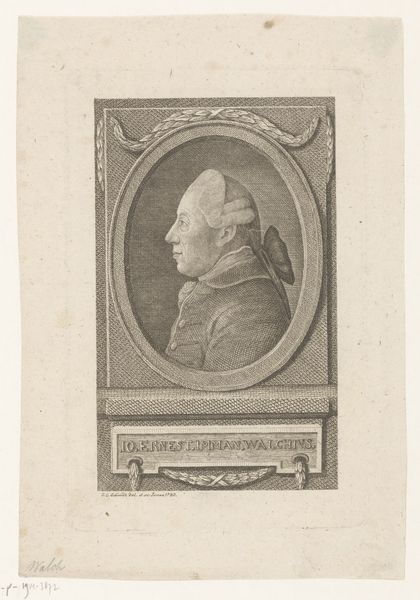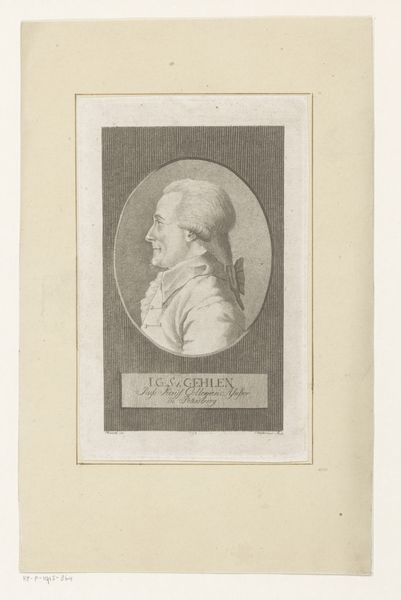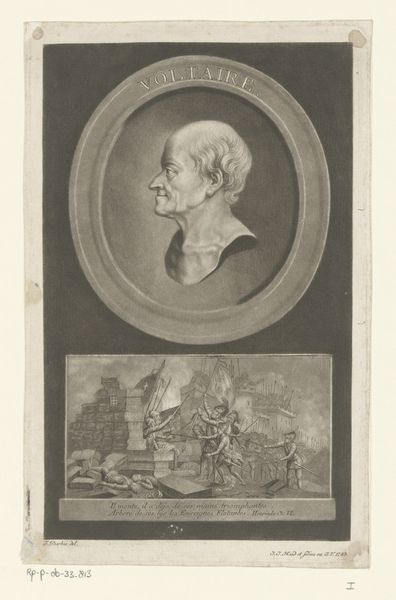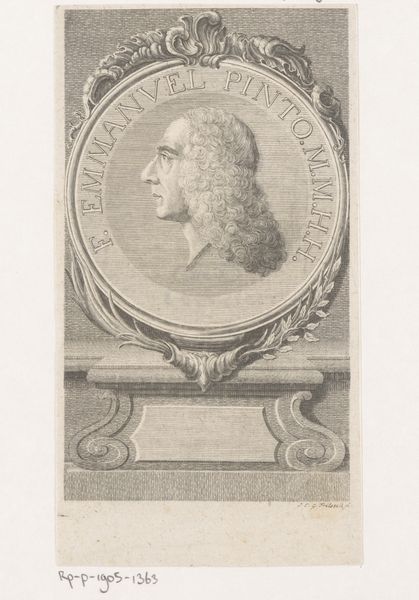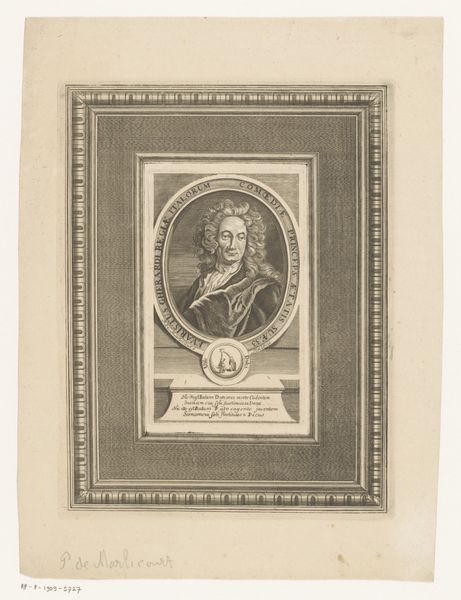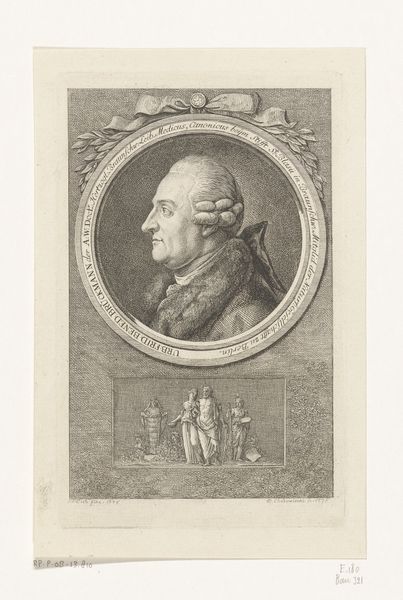
print, engraving
#
portrait
#
neoclacissism
# print
#
history-painting
#
engraving
Dimensions: height 274 mm, width 214 mm
Copyright: Rijks Museum: Open Domain
Curator: This is Daniel Nikolaus Chodowiecki’s 1774 engraving, “Portret van Christian Wilhelm Ernst Dietrich,” held here at the Rijksmuseum. Editor: The monochrome palette lends a timeless gravitas. Its fine lines and formal composition suggest a moment captured with neoclassical restraint. But there's a hint of something...I want to say vulnerable...in the subject's gaze. Curator: The print is an interesting specimen of artistic labor. Chodowiecki, who was active in both Berlin and Danzig, expertly transferred an image to a metal plate, likely copper, using a burin. This engraving process, with its precise tool work, allowed for multiple reproductions, democratizing access to this likeness. Think of the implications for the circulation of ideas at that time. Editor: Absolutely. The dissemination of portraits, especially of those in positions of power or influence, played a crucial role in shaping public perception. But, looking closer, I wonder, who was Dietrich, and how did his identity intersect with the societal norms represented here? The stoic image, framed like a classical bust on a pedestal, appears to reinforce a particular image of masculinity and status, right? The medium itself would contribute to the construction of such perception, no? Curator: Precisely. The labor of reproducing and circulating images cemented certain social narratives. As for Dietrich, he was a well-regarded painter; the engraving acts, in a sense, as a commodity itself, an artifact celebrating artistry. Editor: And further amplifying the artistry. How do we disentangle this celebration from broader discussions of artistic patronage? Considering Chodowiecki's own artistic ambitions and the social dynamics embedded in portraiture... Curator: Food for thought, certainly. Thank you for highlighting these fascinating elements. I think it provides a rich, layered reading. Editor: Thanks. Engaging with an artwork always prompts us to revisit historical constructions through today’s critical lenses.
Comments
No comments
Be the first to comment and join the conversation on the ultimate creative platform.
